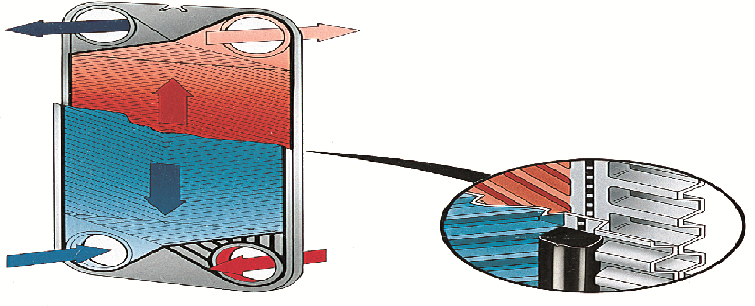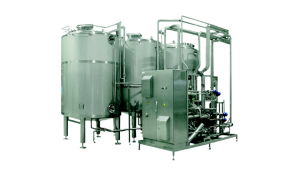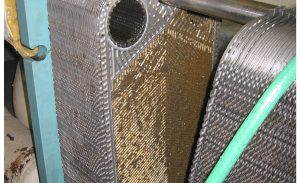The gasketed plate heat exchanger consists of a series of thin corrugated plates fitted with gaskets. The plates are then compressed together in a rigid frame to create an arrangement of parallel flow channels. The two fluids flow in alternate channels so there is a large surface area over which the transfer of heat energy from one fluid to the other can take place. The channels are specially designed to induce maximum turbulence in both the fluid flows in order to make heat transfer as efficient as possible.
The two different fluids normally enter and leave at the top and bottom of the heat exchanger, respectively. This is known as the counter-current flow principle.
The gasketed design also makes it easy to separate the plates quickly – when they need to be cleaned, for example. It also makes it easy to adjust capacity by simply adding or removing plates as and when required.




